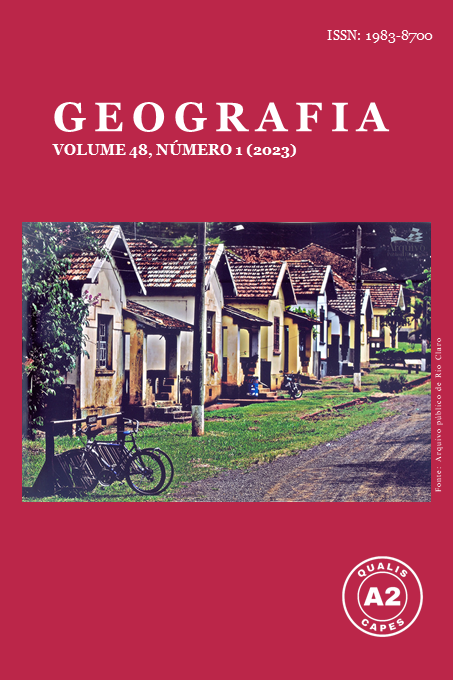OVERVIEW OF THE ENERGY SCENARIO OF THE LAST ELECTRIC BORDER RORAIMA
DOI:
https://doi.org/10.5016/geografia.v48i1.16848Abstract
The Brazilian electrical system consists of an interconnected and isolated system. National Interconnected System (SIN), which extends over almost the entire territory, is responsible for serving 98.3% of the Brazilian population, mostly with energy from hydroelectric plants. The isolated systems are located in more remote areas, mainly in the Amazon, serve approximately 13% of the population and are supported by diesel oil. This system configures Roraima as the last electrical frontier, as it is the only Brazilian state that is not included in the SIN. The objective of this work is to analyze the energy scenario in the state of Roraima, located in the extreme north of Brazil. The methodology used was based on the research of secondary data through document analysis and scientific publications. In 2021, there was a strong investment in photovoltaic solar energy, concentrated in Boa Vista, in the residential class. In 2022, in addition to solar energy, other sources are being tested to possibly replace diesel oil, among them: natural gas, biomass and biodiesel. With these investments, there is an energy transition in the State, however, greater attention from the public power is needed in the infrastructure and in the access to this resource.in the infrastructure and in the access to this resource.
Downloads
Published
Issue
Section
License
Copyright (c) 2023 GEOGRAFIA

This work is licensed under a Creative Commons Attribution 4.0 International License.
The authors maintain the copyright and grant GEOGRAFIA the right of first publication, with the articles simultaneously licensed under the Creative Commons BY 4.0 License, which allows sharing and adapting the articles for any purpose, as long as appropriate credits and provisions of image rights, privacy or moral rights. Other legal attributions can be accessed at: https://creativecommons.org/licenses/by/4.0/legalcode.en.
Geography, Rio Claro, SP, Brazil - eISSN 1983-8700 is licensed under the Creative Commons BY 4.0 License.





